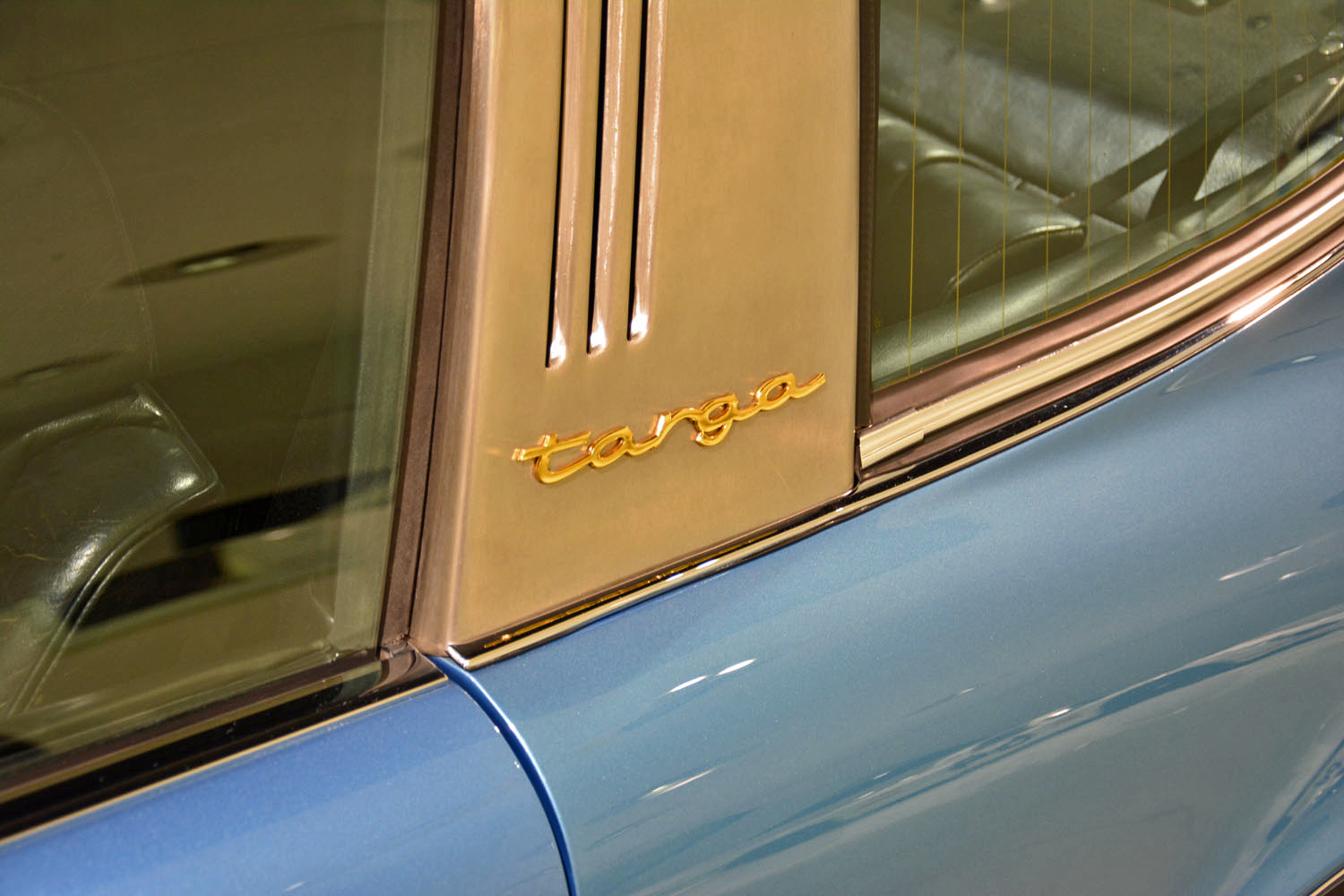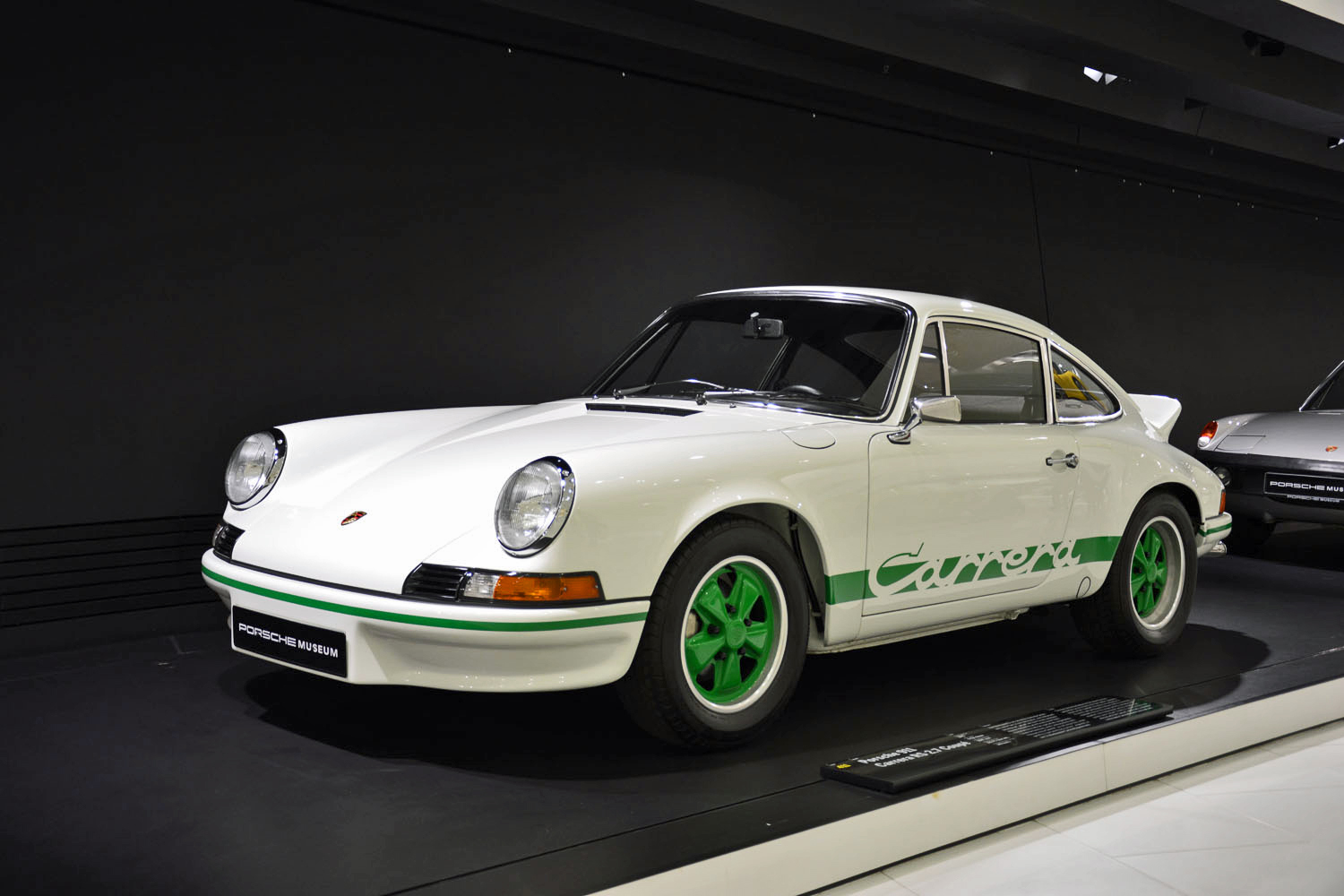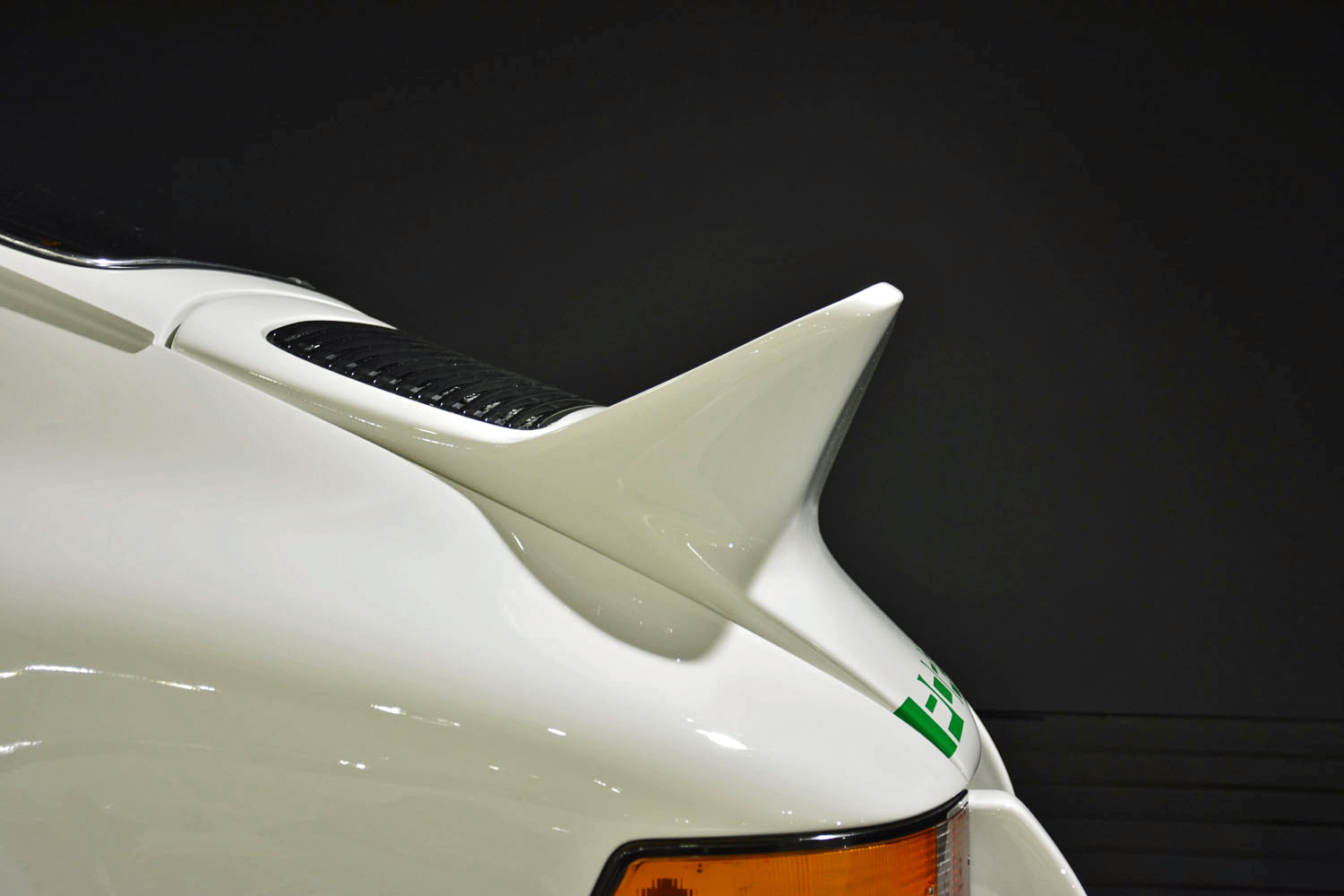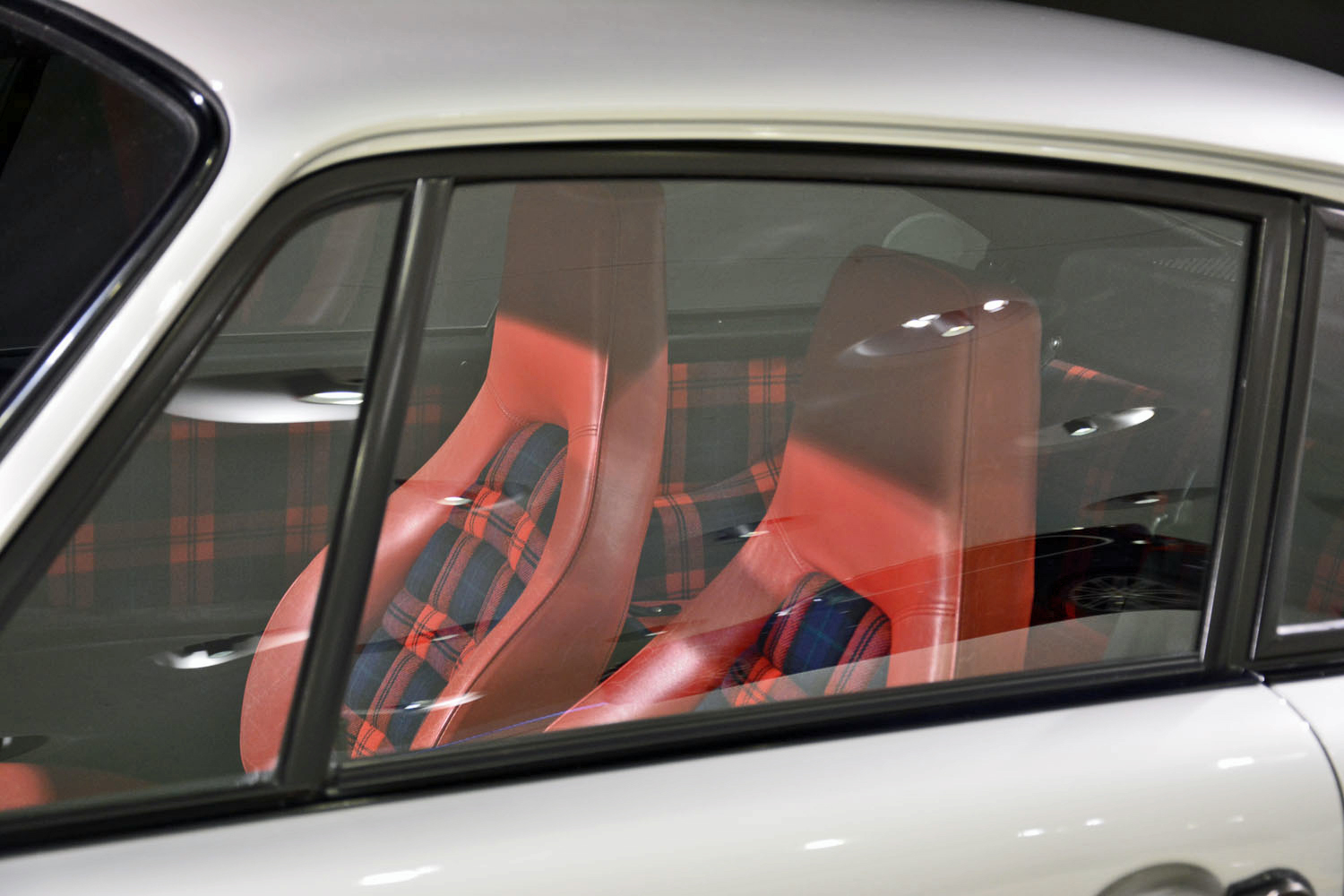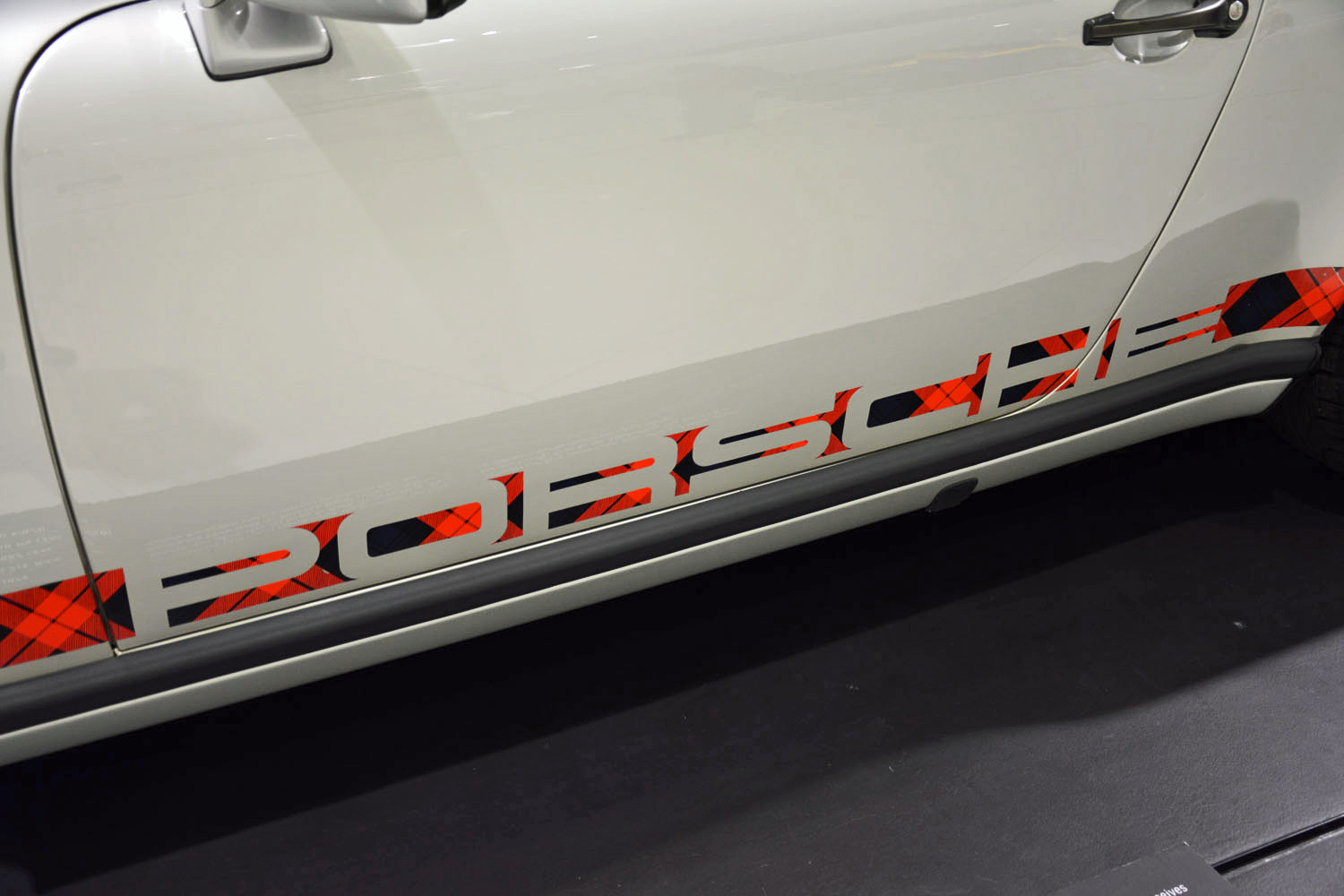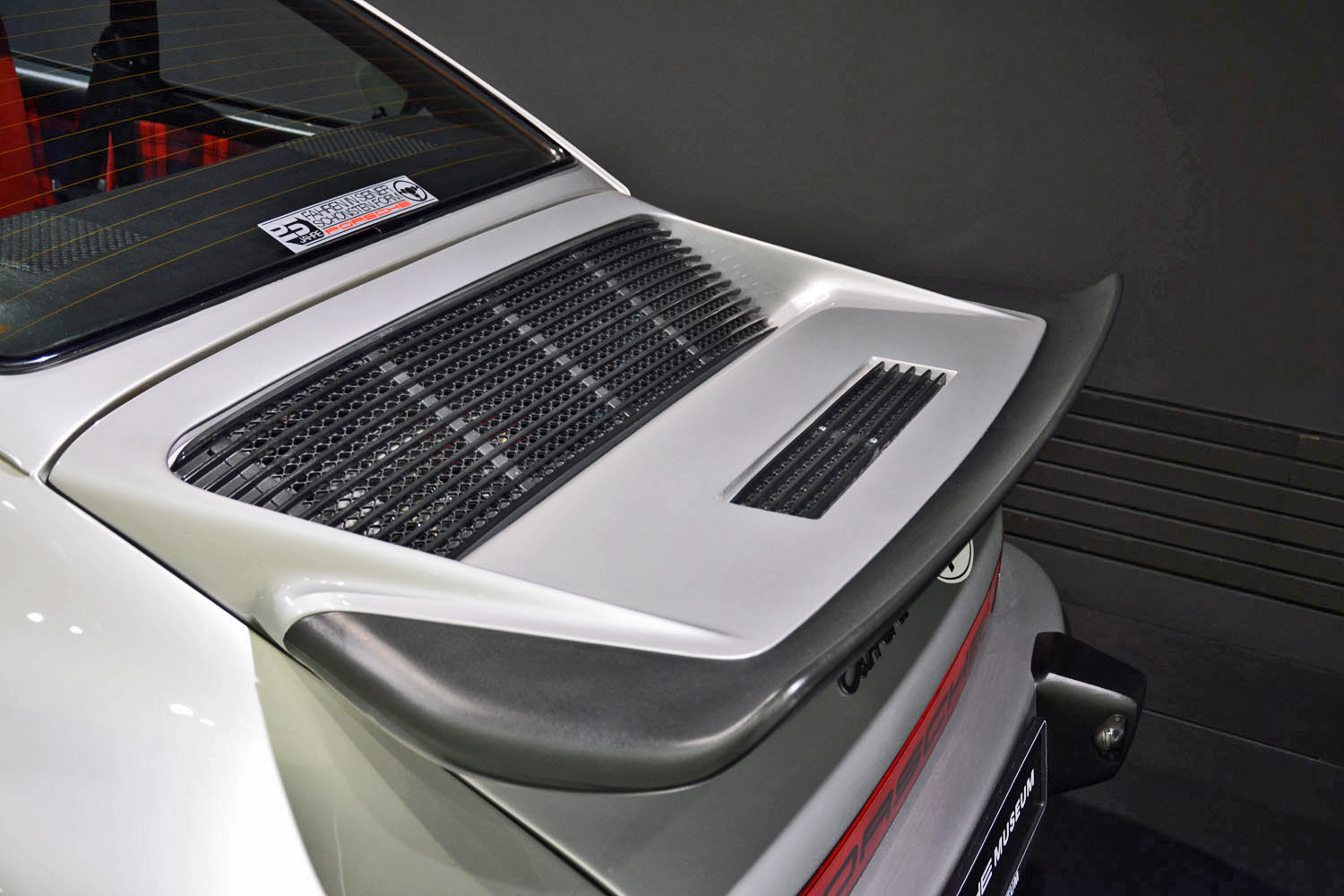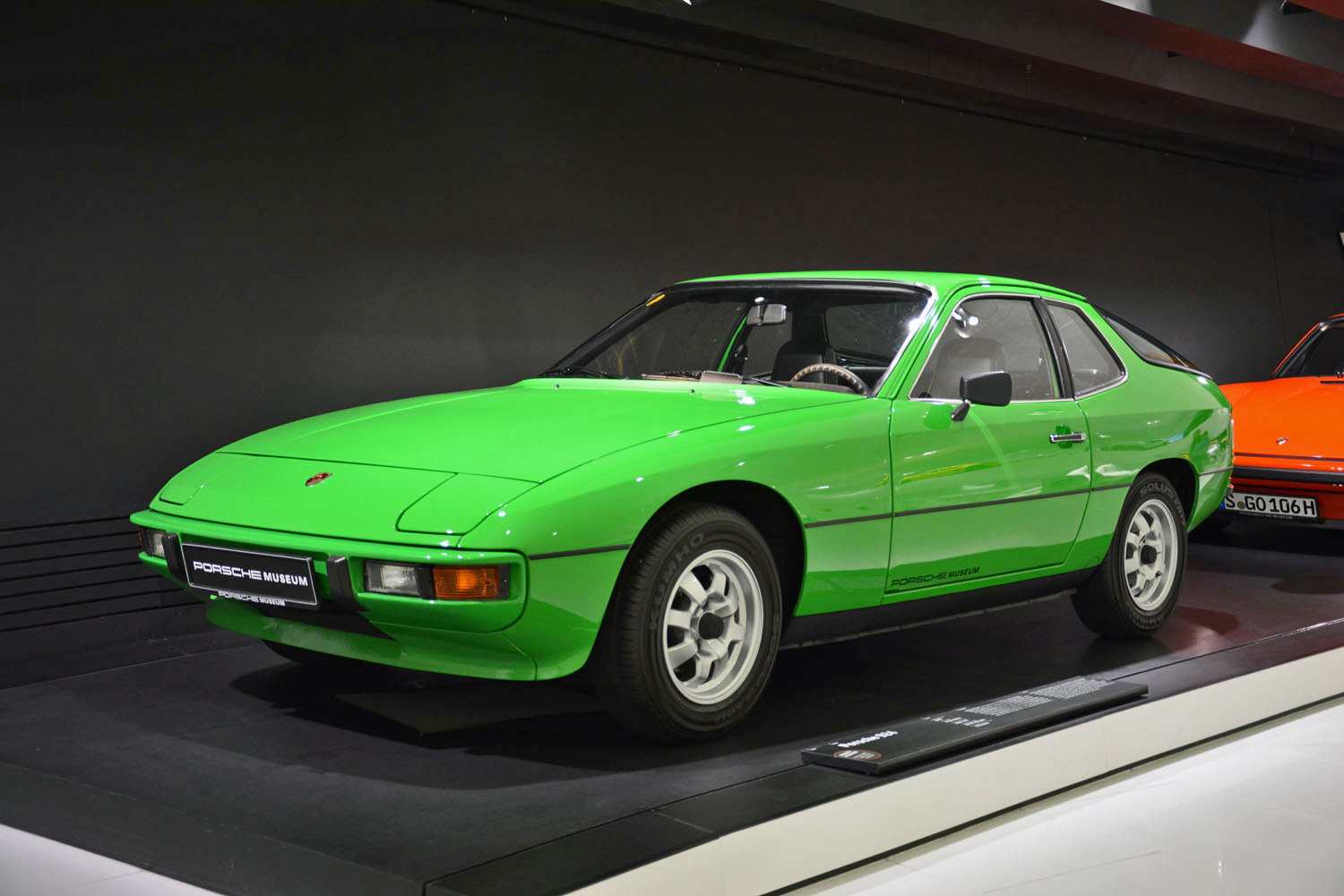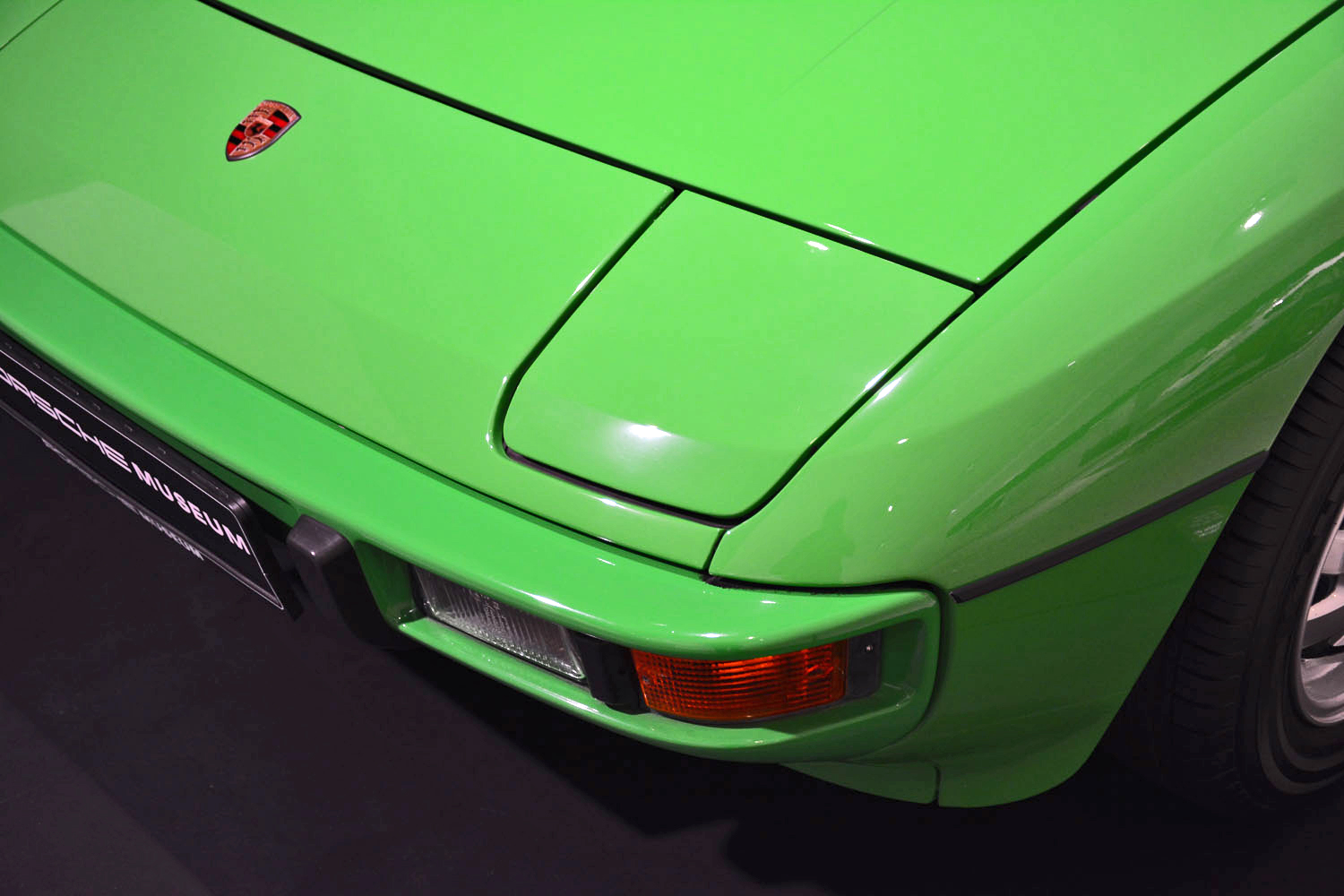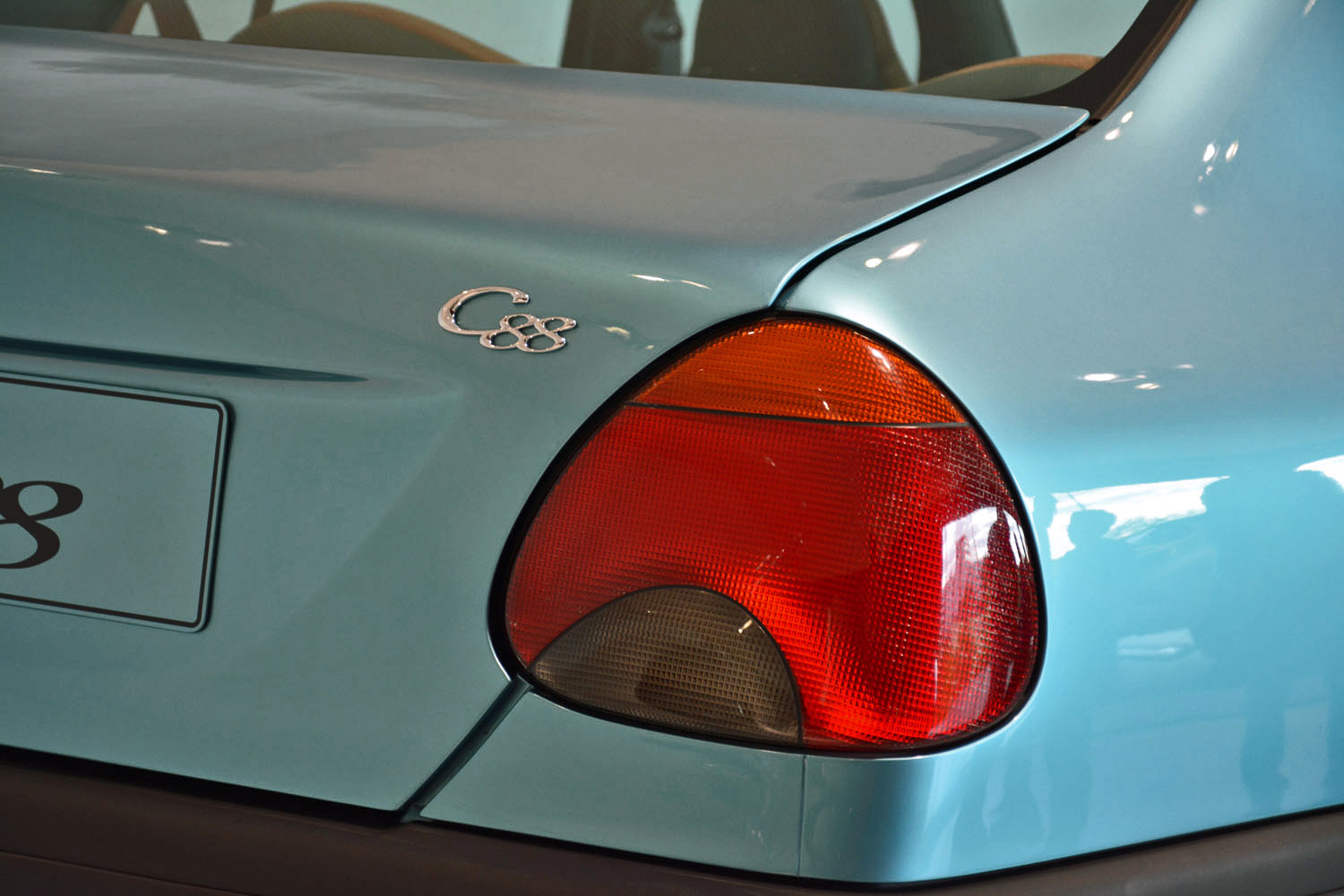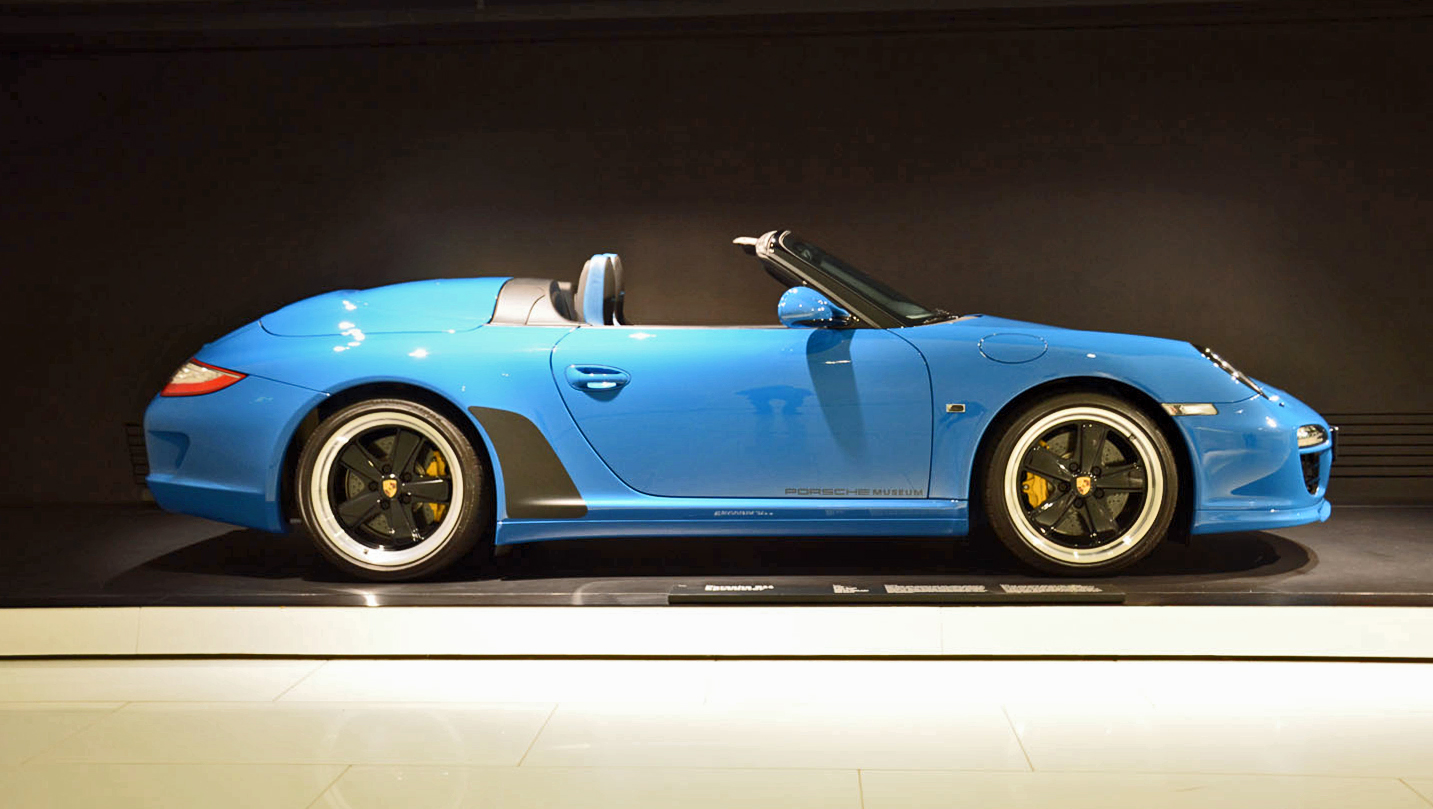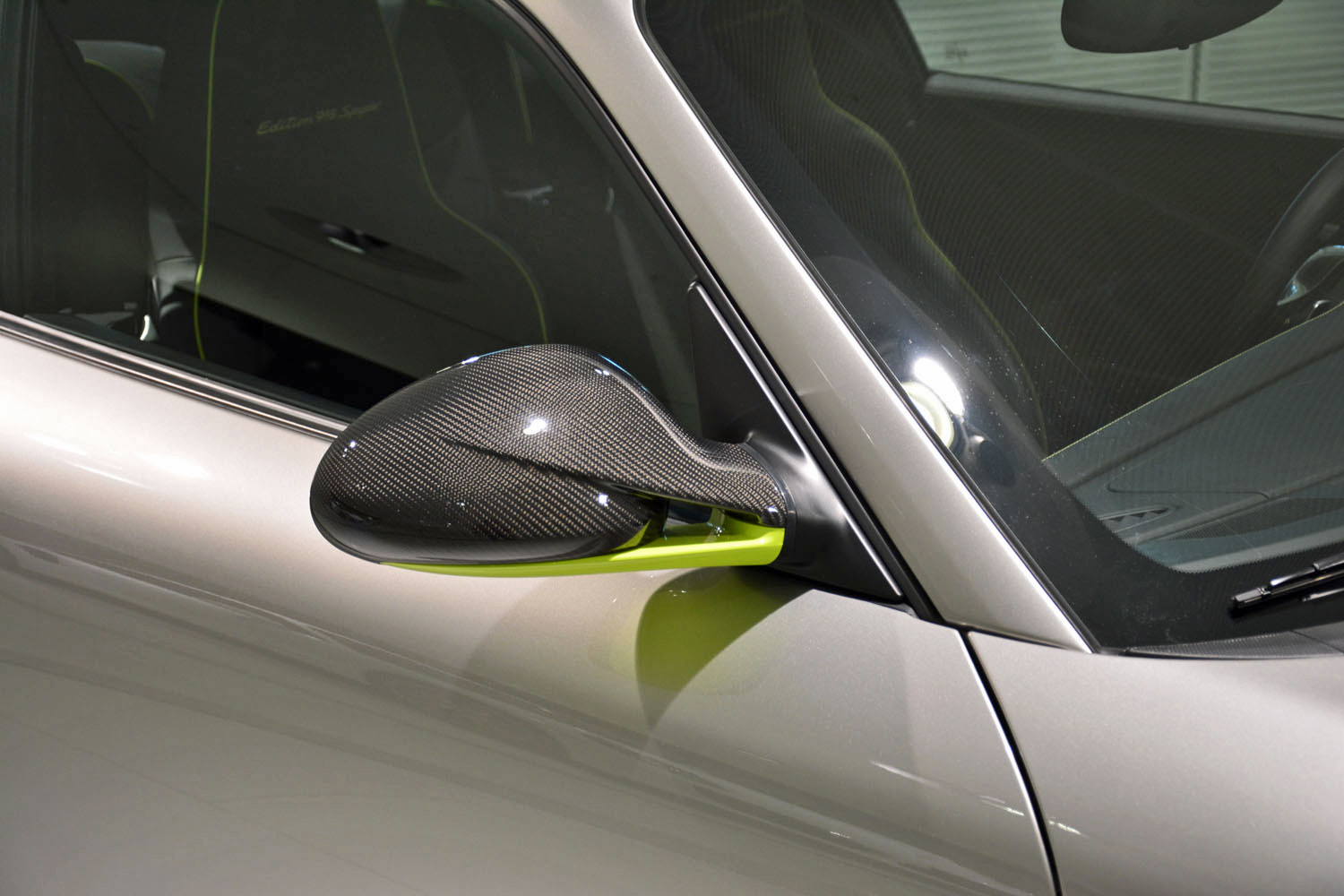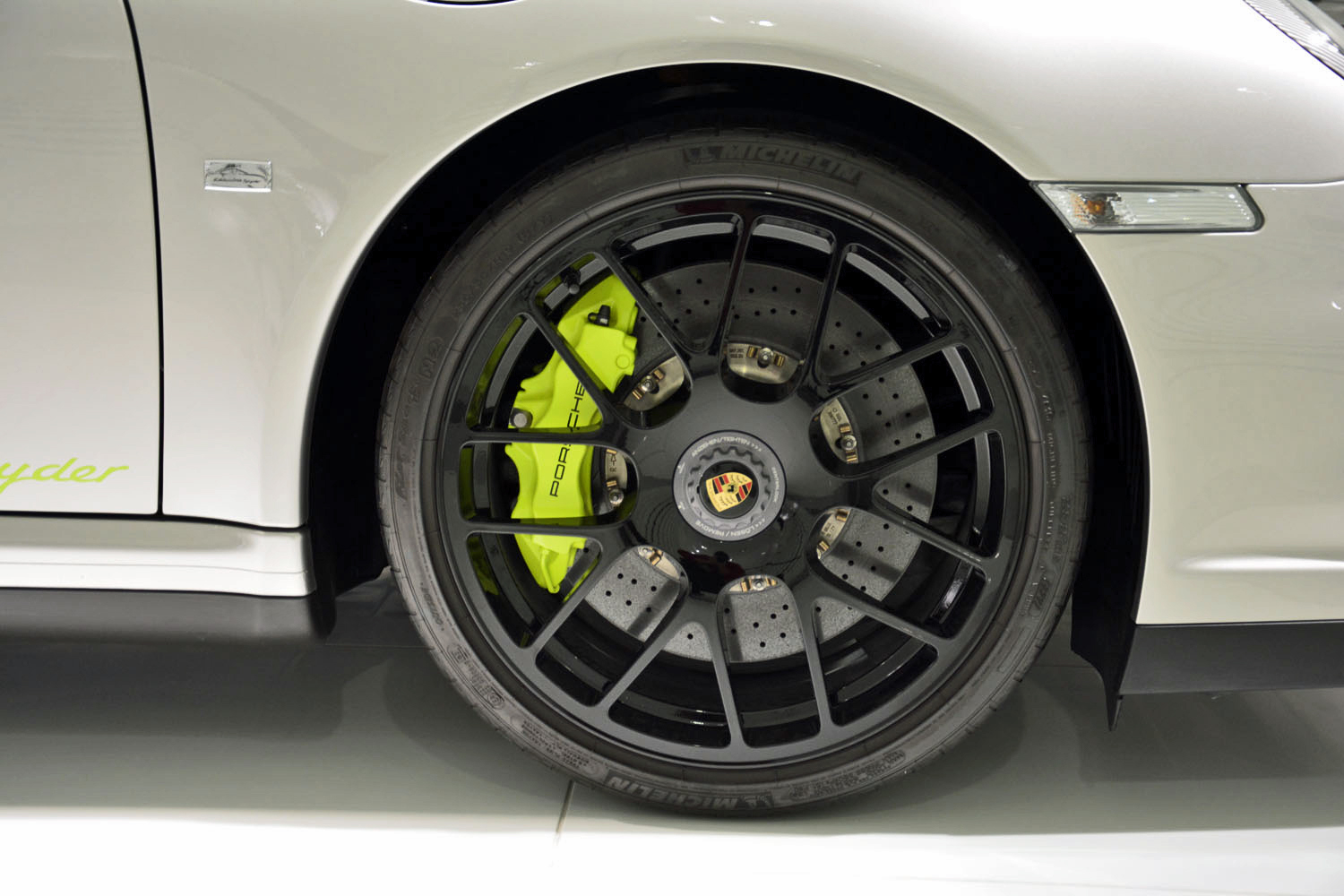I often tell folks that, for a very specific reason, Stuttgart is the most beautiful city in Germany. It’s true that there’s plenty to see and do downtown, but for car aficionados like myself, the main attractions are unquestionably the Porsche and the Mercedes-Benz museums that are located on the outskirts of the city.
All told, there are approximately 80 cars on display in the Porsche museum that generate a combined output of over 23,000 horsepower.
Easily accessible by metro, the Porsche museum is a three-story building that’s split up into several sections. These include Porsche-related cars built before 1948, Porsche street cars built after 1948, Porsche race cars built after 1948, one-offs, cars engineered by Porsche, and the company’s current models. All told, there are approximately 80 cars on display that generate a combined output of over 23,000 horsepower.
The displays occasionally change and cars inevitably get moved around, but visitors are certain to see an impressive collection that includes mainstream models, concepts, and some of the racers that helped Porsche become one of the most successful companies in motorsport.
Thinking of trekking out to Stuttgart? To whet your appetite, here are ten must-see models from our recent visit to the museum.
1948 356 No. 1
Built in the spring of 1948, this convertible is one of the most historically significant models in the museum because it’s the very first sports car to wear the Porsche name, which is why that year is an important benchmark in the automaker’s history. It was powered by a mid-mounted, air-cooled flat-four engine that was sourced from the Volkswagen Beetle and tweaked to deliver 35 horsepower.
That’s not a lot on paper, but it was enough to send the 1,289-pound roadster on to a top speed of nearly 85 mph, a figure that was downright impressive during the 1930s. Its design strongly influenced the regular-production 356, though the flat-four was moved behind the rear axle for packaging reasons.
1950 356 SL Coupe
The aforementioned 356 No. 1 morphed into the very first 356 Coupe. Porsche didn’t have a wind tunnel at the time but the coupe nonetheless boasted a surprisingly low drag coefficient. Auguste Veuillet, Porsche’s French importer, drove an early 356 Coupe at an average speed of 73 mph during a race.
Eager to push the aluminum-bodied coupe to its limits, some competitors fitted covers over the wheel arches and vents over the rear windows in order to make it as aerodynamic as possible. The 356’s early successes helped cement Porsche’s reputation as a forced to be reckoned with in racing circles.
1970 911 S 2.2 Targa
In the 1960s, many domestic and foreign automakers were afraid that the United States government was preparing to ban convertibles for safety reasons. Porsche consequently developed the 911 Targa in a bid to strike a balance between open-top motoring and safety.
Ragtops weren’t outlawed after all, but the Targa went on to become a popular member of the 911 lineup. In hindsight, Porsche’s bold prediction that “some day, all convertibles will have a roll bar” was spot on.
1973 911 Carrera RS 2.7
Often hailed as one of the most iconic 911s ever built, the Carrera RS 2.7 was the fastest German production car when it was introduced in late 1972. It was built as a homologation special so that Porsche could keep racing after the FIA banned the 917.
Power was delivered by a 2.7-liter air-cooled flat-six engine that made 210 horsepower at 6,300 rpm and 188 pound-feet of torque at 5,100 rpm thanks in part to a fuel-injection system designed by Bosch. The 2,149-pound RS could reach 62 mph from a stop in 5.8 seconds.
1974 911 Turbo (No. 1)
The turbocharged 911 traces its roots back all the way to the early 1970s. The very first 911 Turbo ever built was given to Louise Piëch, Ferdinand Porsche’s daughter, on August 29th, 1974, for her 70th birthday. It could reach a top speed of 155 mph thanks to a turbocharged 3.0-liter flat-six engine that made about 260 horsepower.
Outside, the biggest difference between the first Turbo and a naturally-aspirated 911 of the same era was a huge wing on the deck lid and custom decals above the rocker panels. The interior was upholstered in an eye-catching combination of red and blue tartan cloth and red leather.
1976 924
The 924 was born when Volkswagen enlisted Porsche to help design a front-engined, rear-wheel drive coupe. Volkswagen canceled the project at the last minute for financial reasons, but Porsche saw a great deal of potential in it so it purchased the design, improved it and launched it in 1976 as an entry-level model.
The 924 stood out as the first water-cooled car Porsche had ever built. It wasn’t as fast as the more expensive 911 but it was nonetheless fun to drive because the rear-mounted transmission helped it achieve a near-50/50 weight distribution. A turbocharged model was added to the lineup a little later in the production run, and the 924 eventually spawned the more powerful 944.
1987 944 Turbo
This 1987 model-year 944 Turbo embarked on a grueling trip around the world on January 29th, 1986. Over the course of about a month it covered well over 25,000 miles and encountered temperatures that ranged from -18 F in Canada to nearly 106 F in Australia. Surprisingly, the pilot and the co-pilot never opened the emergency tool box that was packed in the trunk.
While many assumed the record-setting trip was simply a media event held to boost the image of the 944 Turbo, Porsche later admitted the drive was also a way to put the then-new catalytic converter through the ultimate endurance test.
1994 C88
Although it could easily be written off as a prototype for the first generation of the Dacia Logan, this rather nondescript sedan was designed and built by Porsche’s engineering arm at the request of the Chinese government. At the time, Beijing was considering opening up its new car market so it invited about 20 foreign companies to submit prototypes that showed their vision of a Chinese people’s car. Officials promised the best design would be awarded a lucrative production contract.
Called C88, Porsche’s concept was designed as a basic, rugged, reliable and affordable form of transportation; it was referred to as a modern-day Beetle more than once. It was based on a modular platform that could also spawn a two-door sedan, a station wagon and even a compact pickup. The project was promising, but the Chinese government rejected every single proposal it received from the companies that participated in the project.
2010 911 Speedster
Not your average topless 911, the Speedster was a limited-edition model that was built by Porsche Exclusive in 2010 as tribute to the original 356 Speedster. It looked sportier than a regular 911 convertible thanks to a shorter and steeply raked A-pillar, and its decklid gained a body-colored shell with two retro-inspired humps.
Porsche didn’t make any mechanical modifications, meaning the Speedster was powered by a 408-horsepower 3.8-liter flat-six that was borrowed from the GTS. Production was limited to just 356 examples, and roughly 100 of those were earmarked for the United States market.
2012 911 Turbo S Edition 918 Spyder
This rare, limited-edition version of the 911 Turbo S was quietly introduced in 2012 to celebrate the launch of the ground-breaking 918 Spyder. It cost about $160,000, and only well-heeled collectors who had already spent close to $1 million on a 918 were eligible to buy it.
Riding on black center-locking wheels, the Edition 918 Spyder gained a host of visual updates such as neon green accents inside and out and a sprinkling of carbon fiber trim. It’s admittedly not the most significant car in the Porsche museum, but seeing rather obscure models like this limited-edition Turbo S is what helps enthusiasts paint a complete picture of the company’s illustrious history.

















